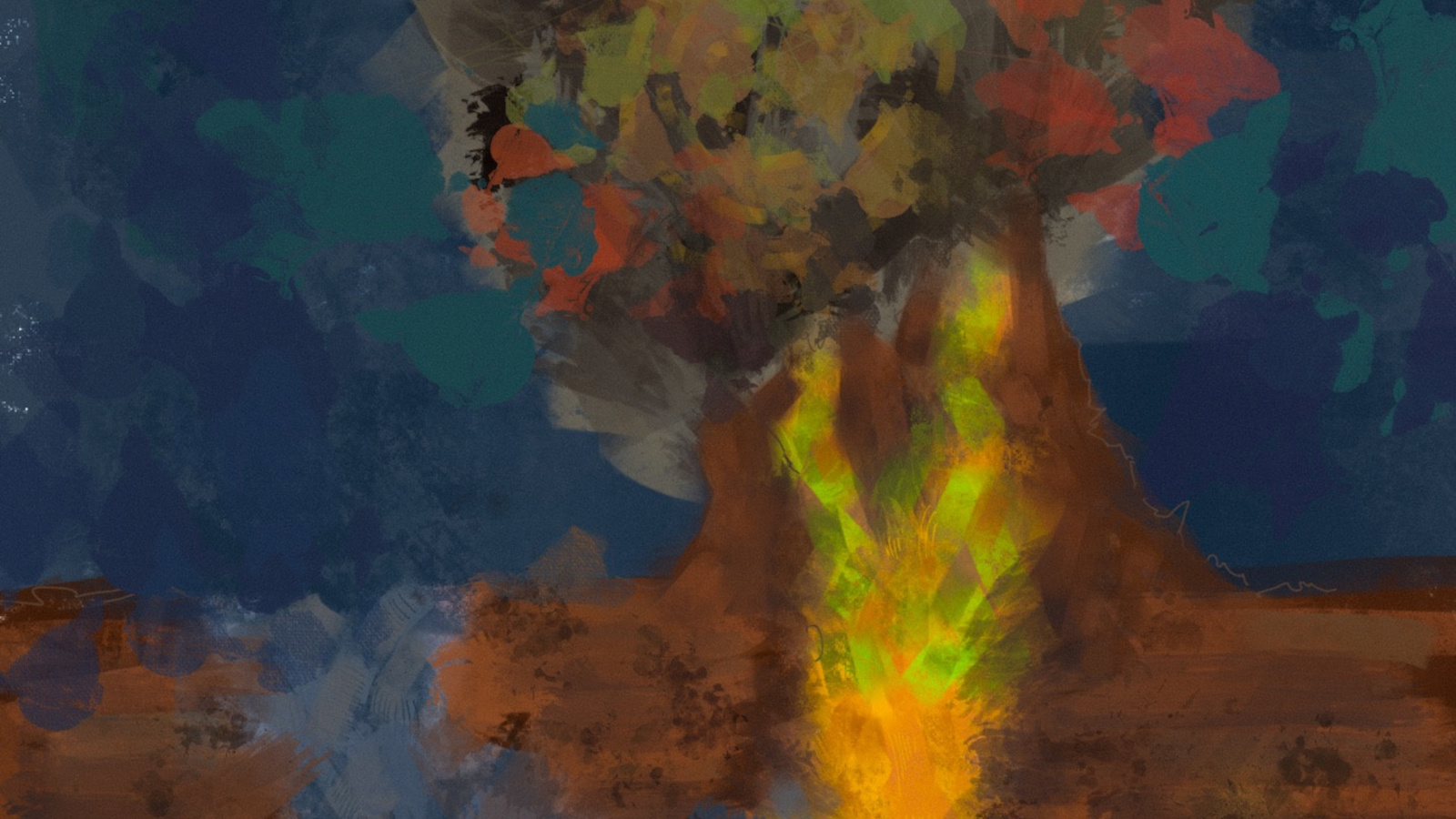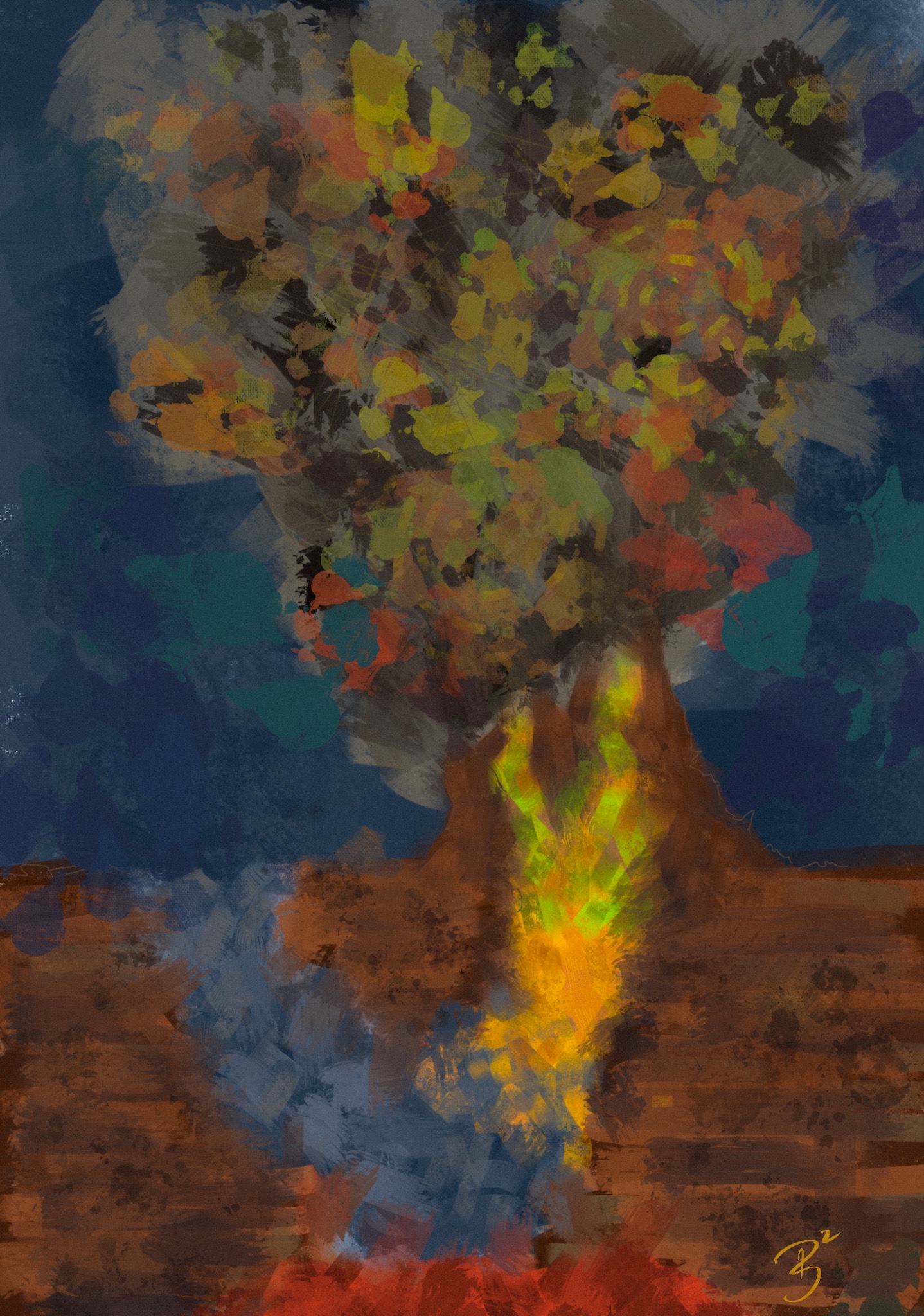7 min to read
A story from an hydrothermal vent
Down there and back again, a tale of a hydrothermal fluid

The subsurface of planet Earth is a mysterious place. It is particularly difficult for us, surface dwellers, to comprehend not only something we cannot see but also something with the sheer size of the subsurface environment. Thus, for a long time, it only had a place in our imagination.
During this period, we told stories about buried gods and other forgotten deities that burst flames and molten rock through mountains and shook the land with their anger. This helped us make sense of the subsurface with our limited knowledge. But along the way, we have learned a lot about what lies beneath our feet, and one of the ways we can “look down”, is why I am telling you this story. The key is to use an environment as a window - a window that enables us to peek deep inside our planet - to understand which processes are occurring at the heart of planet Earth.
For this reason, I invite you to join me on an adventure, to go on a journey there and back again, deep inside our planet. But before we start, let me introduce you to our window to the subsurface, the hydrothermal vent environment.
What exactly is a hydrothermal vent you may ask by now? Simply, it is where water that percolates down the Earth’s crust, gets heated, and returns back up, where it is discharged at the seafloor in the form of hydrothermal fluids. As you can guess, the reality is a little bit more complicated than that. If you think of it, you might already have an idea of what a hydrothermal vent is; the image that readily comes to mind is that of the black smokers, found at the depths of the oceans, more than 2 km below seawater. These imposing mineral cones ejecting black fluids are quite the sight, especially if you are watching them from a submarine, such as the ones researchers use to study them. However, even though these hydrothermal vents are probably the most known, not by any means are they the only example we can find. You can also encounter, for example, white smokers, such as the ones found at Lost City hydrothermal fields. Another interesting example is Strytan, the empire state building of hydrothermal vents, with a cone composed of a mineral called Saponite reaching a height of 55 meters. There are all the shades of gray in regards to hydrothermal vents, however, their formation always encompasses the same steps, and that is what this story is all about.

We will take this journey alongside hydrothermal fluids, and for that reason, we will start alongside the initial liquid that originates them, seawater. As we start percolating with seawater down the Earth’s crust, we are aided by the fact that rocks have some degree of porosity, and cracks in the rocks enable our descent down. When the temperature starts to rise as we go deeper and deeper, we arrive at the first stop - the recharge zone. This location is characterized by the occurrence of geochemical reactions at low temperatures, between seawater, and the rocks from which it is passing through. The importance of these reactions is that there is an exchange of currency, element currency. And when I say it is an exchange of currency, it is because these reactions deplete some elements from seawater, but in turn, it releases other elements that it takes into its pockets. It is evolving (what is formally called hydrothermal fluid evolution), and at each step, becoming less seawater, and more hydrothermal. With this new composition, downward we go. It’s getting really hot here as we arrive at the new location, the closest to the heat-source, magma or very hot rocks.
The reaction zone, so called, can be seen as the most important since it is where the fluids experience their biggest transformation. The first reaction occurring at this stage is albitization, resulting in the formation of the mineral Albite. Additionally, at this temperature, metals become soluble, so the fluids become more metallic, enriched with elements such as Iron, Copper, and Zinc. The close proximity of the fluids to the magma, also enables the mixture of the fluids with volatiles, gases such as hydrogen, methane and carbon dioxide, that escape from the magma brewing below.
As we reach the highest temperature, an impressive physical phenomenon occurs, phase separation. The temperature is so high, that the fluids just don’t boil, they instantly become vapor. This is important since the element currency the fluids have been accumulating, weighs differently, exactly as the coins in our wallet have different weights. For this reason, some of the currency, the lighter elements, migrate to the vapor phase, while the heavier ones, such as Chloride and Sodium, remain in the liquid phase. Given that these elements are the ones associated with salinity, the liquid phase becomes more saline, to what is called brine. We have now reached the deepest part of our journey at the heart of our planet, many kilometers below our starting point, where we opened the window to the subsurface.
The high temperatures we experience here make the fluids reach maximum buoyancy, migrating up, and reaching the last stage of our journey, the upflow zone. This region, where the temperature begins to lower again, is characterized by other low-temperature reactions, this time different from the ones we encounter in the recharge zone, because fluid currency is now different. Many minerals precipitate on our way up, especially as we start to approach the surface, and mix with the seawater.
Finally, we arrive at the surface. With this journey, we saw an incredible transformation. The transformation of seawater, which through the subsurface “bureau de change”, evolved to hydrothermal fluids, where it was marked by the subsurface.
Now, if you were paying attention, you will have two questions, “How can we explain all the hydrothermal shades of gray that I referred to earlier?” and “How did we come to know how all these processes/reactions actually happen down there?”
An answer to the first one could be: The evolution of hydrothermal fluids takes into account three main things: the initial composition of seawater, the composition of the rocks it interacts with going down, and the source of heat (the depth it occurs, its shape, and composition). Since hydrothermal systems throughout the world occur in different rock types, and the magma below is remarkably different, the resulting hydrothermal fluid composition is very dynamic (currency changes a lot between them), therefore resulting in the vast diversity of hydrothermal vents worldwide. For example, these differences are what distinguish the deep sea vent cousins, the white-smoker and the black-smoker vents. The other one is why we study them, to have a glimpse of the subsurface. We go with submarines deep down the ocean floors to take samples of these fluids. With very expensive and complex machinery, we characterize its composition, and through modeling and extensive laboratory experiments, we get to see the reactions that occur, and that allows us to look down, not seeing with our own eyes, but with science.
But this is only part of the story, really. Remarkably, life thrives in these environments. However, this is a story of its own. One that I will tell you next time: how life actually does it; how their story can help us better understand the evolution of life on this planet, and what this means for the possibility of us finding life elsewhere in other celestial bodies. With this promise for a new story, linking this elusive subsurface environment to the history of life, we finish our adventure, our journey there and back again, and the tale of a hydrothermal fluid.
